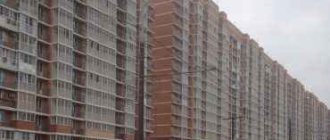To construct any building on your own site, the presence of permits from the administration of the locality and papers certifying ownership are required. If, over time, the owner of a plot of land erected an additional structure without informing the relevant authorities, then the question arises of how to legalize unauthorized construction on his land plot, what actions need to be taken for this, and what responsibility there is for illegal construction.
Self-construction: the essence of the concept, is it possible to legalize unauthorized construction
As for the concept of unauthorized construction, it means the unauthorized erection of any structure on a plot of land without the appropriate permission and in the absence of a legal basis for such actions, which must certainly be formalized. According to Russian legislation (Civil Code of the Russian Federation), owners of land plots are required, first of all and in a timely manner, to obtain permission from local authorities to carry out construction.
In addition, it is mandatory to obtain approval from the town planning organization regarding compliance with the designated construction standards. If any documentation is missing, then the building may be recognized as a self-construction and, based on legal norms, will be subject to mandatory demolition. By definition, illegal construction is a structure that includes:
- a house, garage or bathhouse, which, according to the design documentation, cannot be located on this site, that is, a non-residential building;
- there are no registration papers regarding the plot of land itself;
- there is no approval from the municipal authority for construction work;
- a building constructed in gross violation of urban planning, sanitary and fire safety standards.
An important point in this case is that the one who built it undertakes to demolish the building, either on his own or at his own expense, paying for the appropriate services.
What is considered unauthorized construction?
Before legalizing an unauthorized building, it is worth understanding the concept of unauthorized construction. The following objects need to be legalized if they were built illegally, that is, without all the necessary permission:
- An extension, premises, buildings for the construction of which permission was not obtained.
- Buildings and structures whose data are not included in the cadastral passport.
- Houses and other buildings that are erected on land whose intended purpose does not allow such construction work.
- If the structure was built on a plot of land that was not allocated or received into ownership.
Important! Even if all documents for construction have been received, the land has been registered, and all data has been entered in the register, the house may be recognized as an unauthorized construction. This is due to minor errors and inaccuracies when entering data into the cadastral passport. Therefore, you need to check all the details very carefully.
Basic conditions of the procedure
Unlawful actions on the part of the owner of the land plot, namely illegal construction, are punishable. Therefore, the owner must carry out the correct legalization if the prescribed conditions for construction work are met. To carry out such a procedure as legalizing the erected building, you need to collect the necessary list of papers. Contact the competent authorities to conduct the appropriate examinations, which indicate that there were no violations of construction standards, for example, SNT (horticultural non-profit partnership), and there are no complaints from neighbors. The latter must provide written evidence.
Legalization of construction without unnecessary red tape is provided to citizens who have the right of lifelong inheritance or permanent (perpetual) right of ownership. This provision is regulated by Article 222 of the Tax Code of the Russian Federation, where you can view complete information. Using a simplified procedure, it is also possible to legalize unregistered real estate. It can be carried out under a dacha amnesty.
Legalization through the court, what should be in the claim, the necessary list of papers
In most cases, legalization of an illegally built structure on one's own property is done through the court. But even in this case, it is necessary to provide the most complete information about the plot of land itself and its owner. It is on the facts presented, as well as on the certification of actions regarding attempts to register, that the judicial body makes a decision.
You can complain to the court, namely, filing a statement of claim implies a requirement to legitimize the erected structure and obtain ownership of it. Therefore, the filed claim must necessarily contain correctly stated information:
- certificate of title and its type for the designated land plot;
- type of building constructed;
- full details of the owner who built the building;
- justification of the reason that prompted such construction;
- It must be mandatory to certify that all urban planning standards have been complied with.
In addition to the relevant claim, it is required to attach documentary evidence, which includes:
- passport of the land owner;
- documents directly for the land plot;
- registration certificate;
- technical and cadastral passport;
- permission to put the property into operation;
- certificate from the BTI;
- a certificate from neighbors stating that they have no complaints.
You should also provide an inspection report from the city services for sanitary, fire and urban planning, which are obliged to check the correctness of the technical work performed. Based on their examination, a corresponding act is drawn up.
How to register construction on your own plot of land?
03.10.2019
In the “troubled” years of the 90s, many buildings appeared in Russia, which over time turned into permanent buildings. But not everyone bothered to legitimize the right to them. Therefore, such buildings have either already been demolished or are being prepared for this. How to legalize self-construction in 2019, can this be done legally?
How to legalize self-construction on your site
Self-construction refers to buildings that were erected only at the own will of their owner without the consent of the authorized bodies. The right to them is not legalized. According to registration data, there are no buildings on a certain piece of land. Self-construction can be called not only retail tents near the metro, but also bathhouses at the dachas of some citizens.
You can distinguish a self-construction from a legal building by the following characteristics:
- the plot of land under the building is not properly registered as the property of the owner;
- the object was built on a plot of land, the intended purpose of which does not imply its use in this way;
- a house, bathhouse or other outbuilding was erected on the site without approval from the administration;
- the construction of the structure occurs in violation of urban planning or other norms. For example, bypassing fire safety requirements.
Even the presence of one of these conditions characterizes the structure as an unauthorized construction. The owner may have serious problems with registration of property rights. The sooner you start doing this, the greater the chances of bringing your documents into compliance with current legislation.
Conditions for legalizing self-building
The state gives citizens a chance to register a legal property right to such buildings. Legalization of unauthorized construction is possible if the following conditions are met, specified in paragraph 3 of Art. 222 Civil Code of the Russian Federation:
- the building was erected on a land plot, the property right to which is legalized. The owner is one person;
- construction work was carried out in accordance with standards;
- the object itself does not threaten human life, does not affect the interests of third parties, and is not the subject of a dispute;
- Not a single regulatory and supervisory authority has any claims to this building.
Important! In order to recognize an arbitrary structure as a legal object of property law, it is necessary to go through the legalization procedure and follow a certain procedure, which is prescribed in Law No. 340-FZ.
Legalization through court
Until March 1, 2019, a simplified procedure for legitimizing the property right to unauthorized construction was in effect. This could be done through local governments by collecting the necessary documents. But the conditions described above are necessary.
If the owner of the building was unable, for some reason, to legitimize his right before the specified date, he will now be able to do this only through the court. How to register a self-construction in 2020 in court? To do this, you need to take the following steps:
- Receive a document confirming the absence of a registered property right to the specified building. To do this, you need to contact Rosreestr. You can create an electronic request and receive data electronically. You can contact the MFC and receive “paper” information.
- Specify the category of the land plot. It is necessary that the site has a permitted category for the construction of structures or residential buildings. Then the legalization of property rights will have a legal basis.
- It is necessary to obtain written consent from each regulatory and supervisory authority to legitimize the right. That is, the future owner must have documents in his hands confirming that the supervisory authorities have no complaints about this unauthorized construction.
- You need to contact the BTI and obtain a document confirming the building’s compliance with urban planning standards.
When these documents are ready, it is necessary to draw up a claim with a request to legalize ownership of a specific building. In the “body” of the claim, it is necessary to provide references to the norms of current regulations that may justify the actions of the owner of the site.
As a rule, the courts side with the plaintiffs and issue a judicial act allowing the registration of the right. But, often, the case is delayed due to the fact that the court makes requests to authorized structures to obtain official permits for sanitary, hygienic, and fire safety standards.
Important! It is recommended to entrust the preparation of the statement of claim to a specialized lawyer. If the claim is drawn up with errors, this will be a reason for refusing to consider it. Precious time will be lost! The fact is that some documents have a limited validity period. If you miss the time, they will have to be issued again.
The procedure for legalizing unauthorized buildings
If the building is erected on its own plot (the right to land must be confirmed by an extract from the Unified State Register of Real Estate), then there is a simplified procedure for legalizing and registering property rights. The following steps need to be taken:
- Order a technical plan for construction. To do this, you need to contact the cadastral chamber at the location of your own plot and the registered object. Cadastral and technical engineers will visit the site to take measurements and verify compliance with existing data.
- Collection of a complete set of documents.
- Contact Rosreestr in any convenient way - through the MFC or through State Services. In the first case, paper documents will be needed, in the second - their electronic version.
- Payment of duty. This can be done through the terminal at the MFC, through the State Services portal online or at any bank branch.
- Submitting documents for verification.
- If no questions arise, the right will be issued within 10 calendar days. The owner will be able to obtain an extract from the Unified State Register at the nearest MFC.
Important! The registration authority may refuse to register the right. Then you need to receive a written refusal, prepare a claim and submit all documents to the court.
The judicial authority may recognize the refusal as unfounded and issue a judicial act authorizing the legalization of the right. But, having examined the documents, the court may also recognize Rosreestr’s correctness and make a determination that an obligation to demolish the structure has arisen. Then the owner will need to either file an appeal to a higher authority or demolish the building.
How can you legalize a built house on your own plot without going to court?
One of the simplified options, which provide for the legalization of a building on one’s own site, is considered to be a voluntary application to the local government administration. It is necessary to collect all the required documents and submit them to the local authorities. If there are no title documents for a land plot, then you definitely need to register with Rosreestr.
Do not also forget that in order to complete the registration action you must:
- Pay the state fee. Its value is 2 thousand rubles from individuals.
- Pay for the issuance of a certificate of ownership of a plot of land, if one has not been issued previously.
- If the guarantor will handle the paperwork, then a mandatory power of attorney is required.
If a subject of the Russian Federation refuses to carry out the procedure for legalizing unregistered buildings, you need to send an appeal to the judicial authority.
How to legalize construction on your own land plot in 2018-2019?
Citizens of our country often mistakenly believe that they have the right to build anything and however they want on their own land. However, from a legal point of view, this is not at all the case. Construction must be approved at the planning stage, but what about those who have already placed the building on the ground? We'll tell you how to legalize construction on your own land in 2020.
Features of legalization of construction
There are two ways to legalize unauthorized construction:
- Recognition of property rights in court.
- Pre-trial settlement through a “dacha amnesty”.
If the erected structure does not pose a danger to others and does not affect the interests of other persons and the municipality, then, most likely, the authorities will make a decision in favor of the owner.
Problems with legalization will not arise if certain conditions are met:
- the land plot is owned by the person;
- the type of permitted use of the site allows the construction of buildings;
- the state and municipality do not make claims in relation to the property.
It should be taken into account that illegal construction of buildings is subject to penalties. In addition, the tax for the last three years will be recalculated.
Legitimizing a building administratively, that is, without going to court, means turning to the municipality. The applicant must provide a package of documents and an application for legalization. After this, the commission considers the application, personally inspects the site with the construction and makes a decision whether to grant permission for legalization or not.
If it is not possible to legalize the building through the administration, then you can go to court. It is also important to understand that after a refusal to legalize a building, the owner has only 2 options - wait for an order to demolish the building or delay this process by going to court. According to the law, after issuing an order, an unauthorized building must be demolished within 7 days. Otherwise, it will be forcibly removed, and the owner of the land plot will be forced not only to pay for the work of special equipment, but also an additional fine.
Judicial order
To go to court, it is important to comply with the three conditions listed above. So, if the land plot has not been registered as a property and belongs to a person on some other basis, it will not be possible to legitimize the structure. First you need to settle all matters with the land. To do this, you need to contact Rosreestr or MFC.
Only those buildings that were erected on a site intended for individual housing construction or private household plots can be recognized as legal. If the plot belongs to another category, you will need to transfer it to one of the two indicated, and only after that register the building.
An advantage in court will be the fact that the owner applied for a construction permit, but did not receive it for some reason. However, attention is not focused on this. Usually people are not even aware of the need to obtain a permit, so such court cases are not uncommon.
To successfully resolve the case, it is important that the construction does not violate the rights and legitimate interests of other persons (neighbors, local administration, utility services, etc.). The plaintiff must prove the absence of claims.
To do this, you need to get a written statement from your neighbors stating that the building does not bother them. You can compose the text of this document yourself and collect signatures.
In addition to the neighbors, it is necessary to obtain consent to preserve the building from the architectural department of the municipality and the BTI. These authorities can confirm that the building meets all construction and sanitary standards.
The package of documents for the court includes the following:
- documents that were provided to the municipality;
- written refusal from the administration;
- a written statement from the neighbors stating that the said building does not interfere with them, they have no complaints. The application is drawn up in free form, but must indicate in relation to which area it is written (address), signatures of the parties with a transcript;
- conclusion of the architectural bureau, BTI that the building complies with technical requirements, SanPIN, etc.;
- statement of claim in triplicate.
The claim must state the following:
- information about the owner of the land plot;
- type of construction, its technical characteristics;
- purpose of the building;
- type of land plot;
- the reasons for the appeal are to recognize the construction as legal.
You also need to indicate the list of attached documents, leave your signature and date it.
Standard package of documents
Regardless of the type of building, you will need to provide:
- title documents for land - purchase and sale agreement, deed of gift, certificate of inheritance, etc.;
- legal documents for the plot - certificate of ownership, extract from the Unified State Register of Real Estate;
- cadastral passport;
- technical documentation for land and construction;
- a conclusion that the structure can be put into operation;
- certificate of the inventory value of the building from the BTI;
- other documents upon request.
In some situations, an act of approval of boundaries and an expert opinion regarding the erected structure from a special commission will be required. The building should not pose a danger to the owner, his family members and others.
How to legalize a garage?
The process of legalizing a garage directly depends on where it is located. If this is a private household, you will need to initially register ownership of the land. Legitimation will take place in court.
If the garage was built in a country or garden community, you will not need to go to court. In this case, the garage is designed as an auxiliary building.
When the garage is a permanent, detached building, you need to contact the municipality to convene a commission to eliminate unauthorized construction. The owner of the site will need to write an application requesting permission for state registration of the erected garage.
If a special commission determines that the garage was built in accordance with sanitary and construction standards, and the owner has all registration and technical documents in hand, the issue can be resolved administratively. However, in practice this rarely happens, and the owner still has to go to court.
To ensure that the case review process does not drag on, it is recommended to prepare all the necessary documents in advance. To do this, you will need to contact the municipality and the BTI.
If the area is non-target
When a building is erected on a site that is not intended for construction, the legalization process becomes significantly more complicated. To make registration possible, you will need to transfer the land to another category.
To transfer a category, you must contact the municipality and write an application. The text indicates the rationale for the translation. Only the owner of the land plot can do this.
Intended liability
The problem of illegal self-erection of construction structures on land plots in the vast expanses of the Russian state has been known for a long time. This is due to the fact that there are unregistered buildings on their own land plots, and the reasons for this are the lack of awareness of citizens. Lack of thoroughness of legislation also causes this problem. But it is worth noting that recently local authorities have tightened measures to suppress illegal construction, bringing unscrupulous owners to justice.
Types of responsibility:
- If the land plot is not owned by a citizen, then a building on a designated plot of land, according to the rules of law, is considered a seizure of someone else’s territory. The fine is provided in the amount of 1 thousand to 20 thousand rubles.
- When a construction site is erected on the site that does not correspond to its intended purpose, i.e. for individual housing construction. If it is impossible to legitimize the constructed object, the owner will be forced to demolish it himself or pay for such work.
- Conflict situations may also arise if the land plot is not privatized and no structure can be built on it. A more serious punishment is already provided here, namely:
- confiscation of real estate;
- administrative liability in the form of payment of a fine.
The liability also includes payment of tax for late completion of the required documentation and a fine, which is calculated at 20% of the amount accumulated for non-payment. If the registration procedure has not been completed within 10 years, then the tax amount is doubled.
Clarification of difficult points and presence of nuances
Although spontaneous construction is punishable by law, it is due to the fact that lack of information and bureaucratic aspects complicate the process. Illegal construction on a land plot can be registered if the owner complies with the general rules and regulations of construction work. Therefore, the owner, before contacting the competent authorities, must find out and check compliance with the designated standards. In this case, it is still possible to legitimize a spontaneous construction, but there are a number of nuances that can complicate the procedure itself.
Difficulties
Often, difficulties may arise when collecting the relevant documents, since in their absence it will take a lot of time to collect them, as well as when conducting verification examinations. Problems can arise at any stage of legalization of the erected structure, for example:
- When carrying out expert work, the commission can attest to the violation of the boundaries between buildings designated by the relevant legislative acts. For example, close distance to foreign territory.
- The erected premises violate the territorial integrity between the plots.
- A building may be an object that threatens the life and health of citizens if technological aspects were not followed during construction.
- There is no complete documentation not only about the construction permit, but also about the land plot itself.
Nuances
Based on legal norms, it is required to carry out a registration procedure not only of ownership of a land plot, but also of real estate objects that are being built on it. But there are structures that do not require such certification, these include:
- An auxiliary extension that is being built to a non-capital object and does not have a foundation.
- If a garage is built on land that has an agricultural purpose and is also not intended for conducting entrepreneurial or commercial activities.
- When construction work was carried out as a reconstruction of a non-permanent structure, for example, a shed.
- When carrying out a complete renovation of a capital building, but without affecting the load-bearing walls, they were not moved or reconstructed.
In the absence of title papers for a plot of land and other documentation, a citizen who has carried out unauthorized construction does not have the right to dispose of this property. That is, he has no legal right to rent, sell or gift.
Even if we take into account that the legalization of illegal construction can be carried out, its registration must be done in a timely manner, based on the law. Since this is fraught for the owners, since the result of illegal construction is its demolition, regardless of how much money was invested in it. Do not forget that administrative liability is provided for, which entails the payment of a fine.
How to arrange construction on your own site
Write your question - within 5 minutes our expert will call you back and give you a free consultation. Fill out the form with contact information and receive a free consultation within 5 minutes. Citizens of our country often mistakenly believe that they have the right to build anything and however they want on their own land. However, from a legal point of view, this is not at all the case. Construction must be approved at the planning stage, but what about those who have already placed the building on the ground?
Dear readers! Our articles talk about typical ways to resolve legal issues, but each case is unique.
If you want to find out how to solve your particular problem, please use the online consultant form on the right or call the numbers provided on the website. It's fast and free!
- Permission to build a house on your own plot: how to get it?
- Decoration of buildings
- How to arrange construction on your site
- We design buildings on the site: beware of pitfalls!
- How to legalize an already built house?
- How to register ownership of a house built on your own land
- Obtaining permission to build a house on your own site
- Registration of buildings on a land plot
Permission to build a house on your own plot: how to get it?
VIDEO ON THE TOPIC: How to register a bathhouse, garage or other outbuilding as your property
Today, for example, in the Leningrad region there are no obstacles to obtaining a construction permit and subsequent registration of ownership of an already built residential building. The procedure is quite simple. Dacha amnesty. Can I transfer my land to the individual housing construction category? Its essence is as follows: you declare the construction of a house on a plot of land that belongs to you, attach BTI documents and present all this to the Rosreestr authorities through the MFC system.
The result is the presence of a registered right to this house as a residential property. However, the presence or absence of ownership rights does not entail the obligation of the operating services to bring communications to the house and, moreover, to connect them.
Currently, your house has the status of an unauthorized construction, as built without obtaining the necessary permits. The Administrative Code of the Russian Federation provides for a fine of 7 thousand rubles for the construction of such an object on a land plot without obtaining the appropriate permits.
In order to obtain a construction permit, and then - an act of putting the house into operation, you will need to contact the local village administration, submitting documents confirming the ownership of the land plot, documents confirming the technical characteristics of the constructed building, including BTI measurements. You may also need to carry out appropriate construction and technical expertise.
In this case, the only thing that may be required when connecting the house to communications will be an expert’s opinion on the presence or absence of such a technical possibility and on compliance with all construction requirements and rules required by law during the construction of the house.
The purpose of the land contradicts the building permit - what to do? A construction ban appeared in the documents for my site.
How so? If on your site, the purpose of which involves the construction of a residential building, individual housing construction, gardening, private plots, there were no previously registered buildings or the buildings were lost due to a fire, for example, then you can register the building without a building permit and commissioning. Regarding the dacha amnesty you mentioned, which has now been extended. That is, to connect communications it is necessary to register ownership of a residential building.
Now you can do this in a simplified form by submitting an application to the MFC. It may be necessary to have the new building measured by a design organization and pay a fee. If you are reconstructing a previously built house, then the dacha amnesty does not apply to such reconstructions.
Then you will need to go through the entire cycle: from obtaining permission for reconstruction to commissioning. Since this year, the cadastral chamber has indeed not issued a technical plan without a building permit.
For houses located on land plots for individual housing construction or private household plots, there are certain rules: You provide a technical plan and only on its basis the ownership is registered. To obtain a cadastral passport, you must obtain a construction permit.
To do this, you need the following documents: technical plan, GPZU, as well as relevant land documents. How to change the category of land? Can I legalize an extension to a house with 4 apartments?
Three critical nuances when purchasing a plot for individual housing construction. The editors reserve the right to select topics from among the questions sent by users.
How to legalize an already built house? Now we need to get it to establish communications. How to do it? What will it be like? And what does the dacha amnesty have to do with it? Is it possible to obtain a building permit quietly: they don’t know whether the house is built or not? You need to contact the district administration or MFC with an application for the issuance of an urban planning plan for a land plot, attaching to the application copies of your passport and a document confirming ownership of the property.
Based on an up-to-date topographic survey, prepare a plan for the planning organization of the site and, together with the previously received urban planning plan, re-apply to the district administration or MFC with an application for a building permit. Conclude an agreement with a cadastral engineer, take internal measurements of the house and link the house to the coordinates of the land plot, prepare a technical plan of the building. Contact the local administration with an application for issuing a resolution to assign an address to a residential building based on the generated technical plan.








